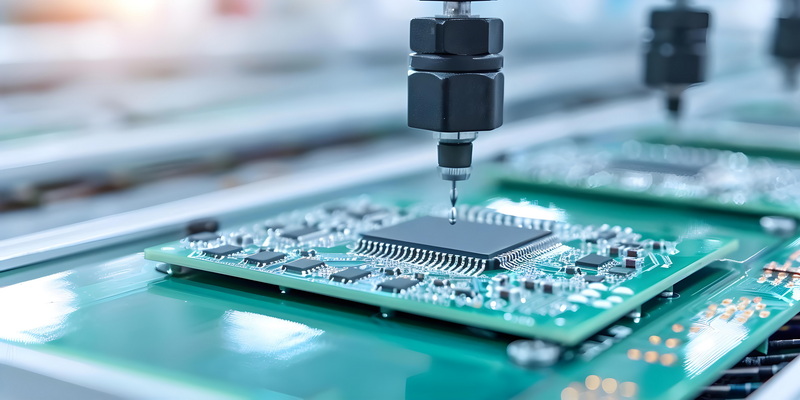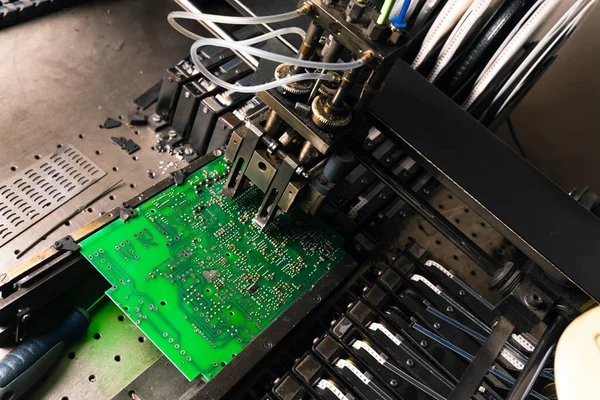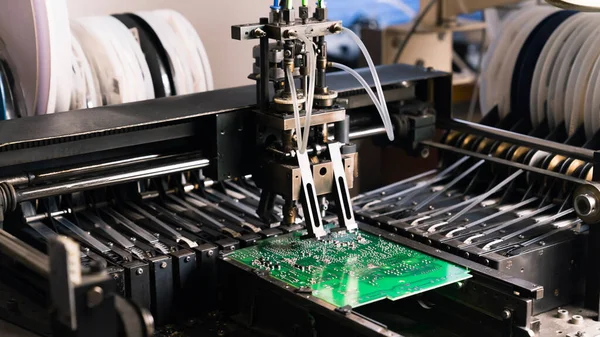Content Menu
● Understanding SMT Lines
● Benefits of SMT Lines in Radiator Production
>> Increased Production Efficiency
>> Improved Quality Control
>> Enhanced Design Flexibility
>> Cost Effectiveness
>> Environmental Benefits
● Challenges and Considerations
● Future Trends in SMT Technology
● Conclusion
● FAQ
>> 1. What is an SMT line?
>> 2. How does SMT improve production efficiency?
>> 3. What are the advantages of using SMT in radiator production?
>> 4. Can SMT lines handle custom designs?
>> 5. What initial investment is required for setting up an SMT line?
Surface Mount Technology (SMT) has revolutionized the electronics manufacturing industry, providing a myriad of advantages over traditional assembly methods. This is particularly true in the context of radiator production, where efficiency, precision, and cost-effectiveness are paramount. In this article, we will delve into the benefits of implementing an SMT line specifically for radiator production, exploring its impact on production efficiency, quality, and overall operational costs.

Understanding SMT Lines
SMT lines are automated systems designed to place surface mount components directly onto the surface of printed circuit boards (PCBs). This process eliminates the need for drilling holes in the PCB, allowing for a more compact design and higher component density. The SMT process involves several key stages:
- Solder Paste Printing: Applying solder paste to the PCB pads.
- Component Placement: Using automated pick-and-place machines to position components accurately on the solder paste.
- Reflow Soldering: Heating the assembly in a reflow oven to melt the solder and create permanent connections.
- Inspection and Testing: Ensuring that all components are correctly placed and soldered.
Benefits of SMT Lines in Radiator Production
Increased Production Efficiency
One of the most significant advantages of using an SMT line for radiator production is enhanced efficiency. Traditional methods often involve manual labor, which can be slow and prone to errors. In contrast, an SMT line automates many processes, resulting in:
- Faster Assembly Times: Automated machines can place thousands of components per hour, significantly reducing production time.
- Reduced Labor Costs: With less manual intervention required, companies can lower their labor costs while reallocating human resources to more critical tasks.
- Streamlined Workflow: The continuous flow of components through various stations minimizes downtime and maximizes throughput.
Improved Quality Control
Quality is crucial in radiator production, where performance and reliability are essential. SMT lines contribute to higher quality standards through:
- Precision Placement: Automated pick-and-place machines ensure that components are placed with high accuracy, reducing misalignment and defects.
- Consistent Soldering Quality: Reflow soldering provides uniform heating across all components, leading to stronger solder joints and fewer failures.
- Automated Inspection: Advanced optical inspection systems can detect defects early in the process, allowing for immediate corrections.
Incorporating these quality control measures helps manufacturers maintain high standards that meet industry regulations and customer expectations. The ability to catch defects early not only reduces waste but also enhances customer satisfaction by delivering reliable products.
Enhanced Design Flexibility
SMT technology allows for greater design flexibility compared to traditional methods. This flexibility is particularly beneficial in radiator production where custom designs may be needed:
- Higher Component Density: SMT allows for more components to be placed on a smaller board area, enabling more compact radiator designs.
- Ability to Use Smaller Components: The use of smaller surface mount devices (SMDs) facilitates innovative designs that can improve performance while saving space.
- Dual-Sided Assembly: Components can be mounted on both sides of the PCB, further increasing design possibilities.
This design flexibility enables manufacturers to respond quickly to market demands and customize products according to specific customer requirements without extensive redesign efforts.
Cost Effectiveness
Implementing an SMT line can lead to significant cost savings over time:
- Lower Material Waste: The precise application of solder paste minimizes excess material usage compared to traditional methods.
- Reduced Setup Costs: Once set up, an SMT line can handle multiple production runs without extensive reconfiguration, lowering overhead costs.
- Long-Term Savings on Labor and Production Costs: Although initial investment in SMT technology may be higher, the long-term savings from increased efficiency and reduced labor costs often outweigh these initial expenses.
Additionally, as manufacturers scale their operations using SMT lines, they benefit from economies of scale that further drive down unit costs. This cost-effectiveness allows companies to remain competitive in a rapidly changing market landscape.
Environmental Benefits
In today's eco-conscious market, sustainability is a vital consideration. SMT lines contribute positively towards environmental goals by:
- Reducing Energy Consumption: Automated processes are generally more energy-efficient than manual assembly lines.
- Minimizing Material Waste: The precision of SMT reduces excess materials that would otherwise end up as waste.
- Supporting RoHS Compliance: Many SMT processes are compatible with lead-free soldering techniques that comply with environmental regulations such as RoHS (Restriction of Hazardous Substances).
By adopting SMT technology, manufacturers not only improve their operational efficiency but also align with global sustainability initiatives, appealing to environmentally conscious consumers.

Challenges and Considerations
While there are numerous benefits associated with implementing an SMT line for radiator production, it is essential to consider some challenges as well:
- Initial Investment Cost: The upfront cost of purchasing and setting up an SMT line can be substantial. Companies must evaluate their financial capabilities and potential return on investment carefully.
- Skill Requirements: Operating an SMT line requires skilled personnel who understand both the technology and the intricacies of electronic assembly. Training existing staff or hiring new talent may be necessary.
- Maintenance Needs: Like any automated system, SMT lines require regular maintenance to ensure optimal performance. Companies must establish maintenance protocols to prevent downtime due to equipment failure.
Despite these challenges, many manufacturers find that the long-term benefits far outweigh any initial hurdles they may face during implementation.
Future Trends in SMT Technology
As technology continues to evolve, several trends are emerging within the realm of SMT lines that could further enhance their effectiveness in radiator production:
- AI Integration: Artificial intelligence is being increasingly integrated into manufacturing processes. AI can optimize production schedules, predict maintenance needs, and enhance quality control through advanced data analytics.
- IoT Connectivity: Internet of Things (IoT) technology allows for real-time monitoring of equipment performance. This connectivity helps manufacturers make informed decisions about maintenance and operational efficiency.
- Advanced Materials Development: As new materials enter the market—such as flexible PCBs or advanced thermal management solutions—SMT lines will need to adapt accordingly. Staying ahead of material trends will be crucial for manufacturers looking to innovate their radiator designs continually.
Conclusion
The implementation of an SMT line for radiator production offers numerous benefits that enhance efficiency, improve quality control, provide design flexibility, reduce costs, and promote environmental sustainability. As technology continues to advance, manufacturers who adopt these modern assembly techniques will likely find themselves better positioned in a competitive market.
By investing in an SMT line, companies can not only improve their production capabilities but also ensure they meet the evolving demands of consumers for high-quality and reliable products. The combination of increased efficiency and reduced waste positions businesses favorably against competitors who may still rely on traditional manufacturing methods.

FAQ
1. What is an SMT line?
An SMT line is a manufacturing setup that uses Surface Mount Technology to place electronic components directly onto the surface of PCBs without drilling holes. It typically includes stages such as solder paste printing, component placement, reflow soldering, and inspection.
2. How does SMT improve production efficiency?
SMT improves production efficiency by automating the assembly process, allowing for faster component placement rates and reducing manual labor requirements. This leads to shorter production cycles and higher output rates.
3. What are the advantages of using SMT in radiator production?
The advantages include increased production efficiency, improved quality control through precise placement and consistent soldering, enhanced design flexibility with higher component density, cost-effectiveness due to reduced waste and lower labor costs, and environmental benefits from less energy consumption and material waste.
4. Can SMT lines handle custom designs?
Yes! SMT lines offer greater design flexibility by allowing dual-sided assembly and accommodating smaller components which enable innovative custom designs tailored to specific requirements.
5. What initial investment is required for setting up an SMT line?
The initial investment can be significant due to the cost of machinery and setup; however, many companies find that long-term savings on labor and material costs justify this investment over time.




















